
ZipStik
Starting point
The Zipstik joystick appears to be intact, but it is incredible dirty. The pictures below doesn´t do it justice - it is even worse. There is dirt in every corner and edge on the exterior. There is a very nice clicking sound from all the six microswitches, but it is terrible squeaky so cleaning and lubrication is required. Further on, the autofire button does not appear to function from a mechanical point of view. The cable looks to be ok, except for the strain relief which is partly broken. A suction cup is missing from the bottom cover.
Phew... quite some work required here, but I am positive that this can be a successful refurbish! Below is are som pictures before the refurbishment.

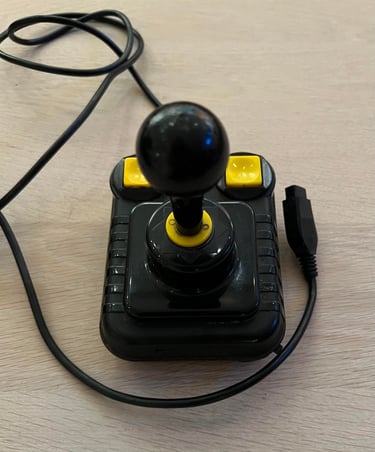

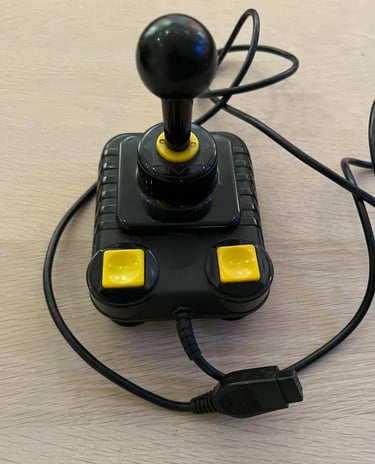
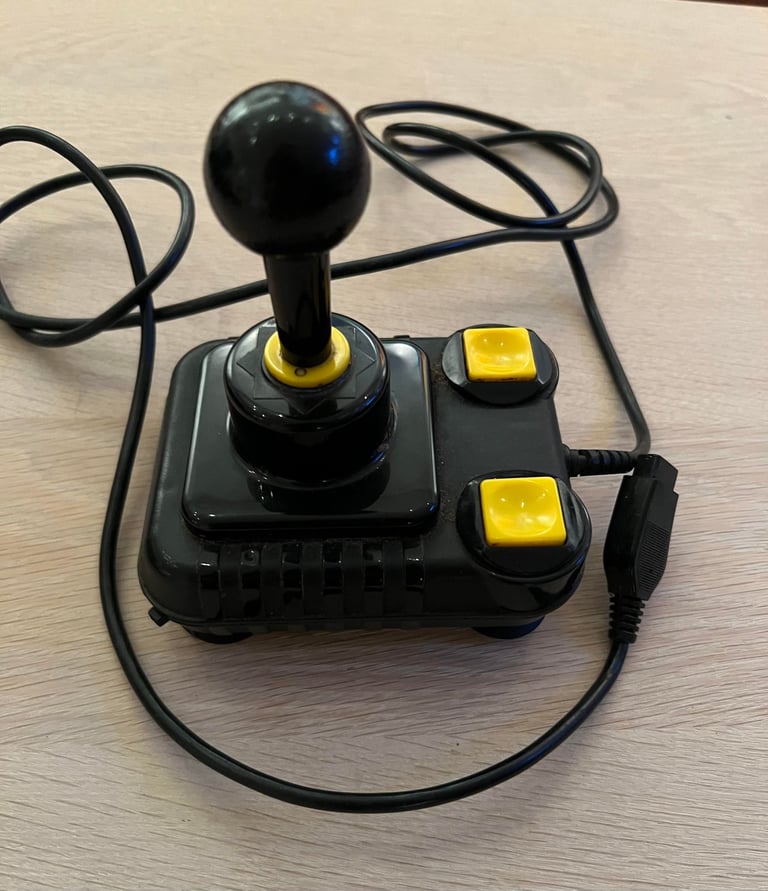

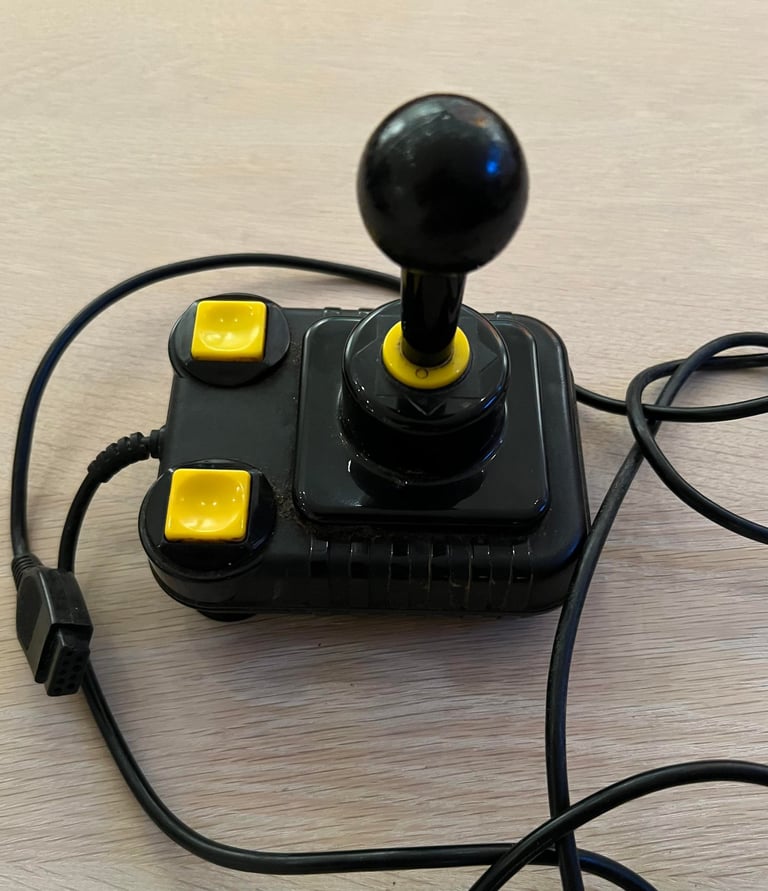

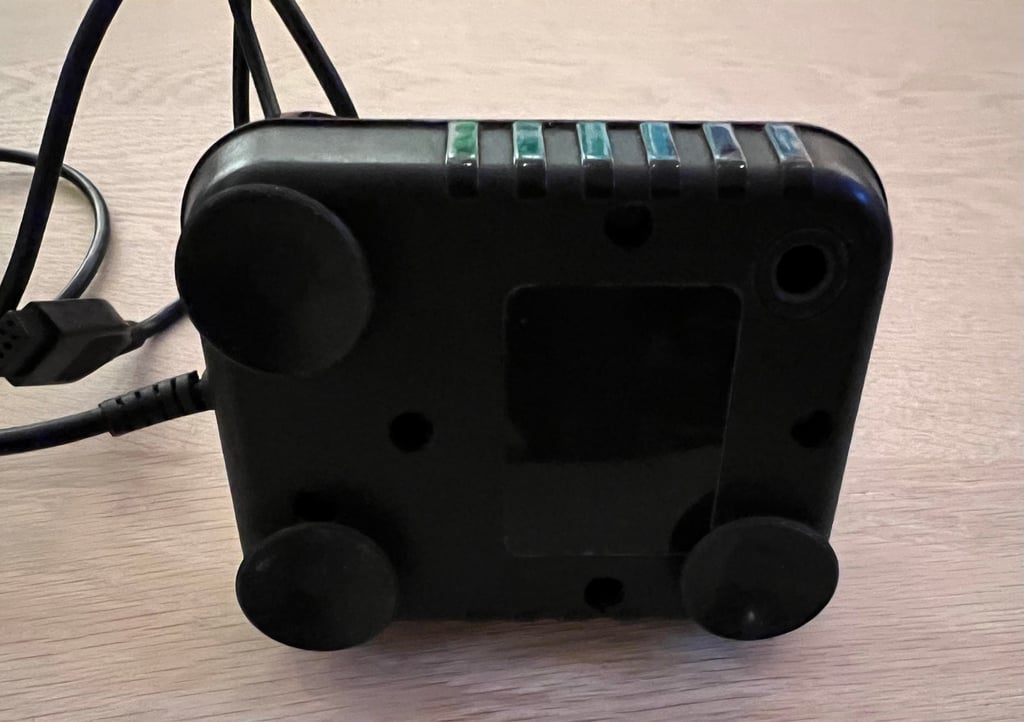

Refurbishment plan
To refurbish this joystick the plan is to do this trough the following steps:
- Clean, and remove stains from, chassis and all parts (and repair if required)
- Clean and check the microswitches (and repair if required)
- Clean and check the autofire (and repair if required)
- Check connectivity (and repair if required)
- Verify joystick operation by testing
Opens it up...
To start disassembly the Zipstik joystick the five screws at the bottom cover are removed first.
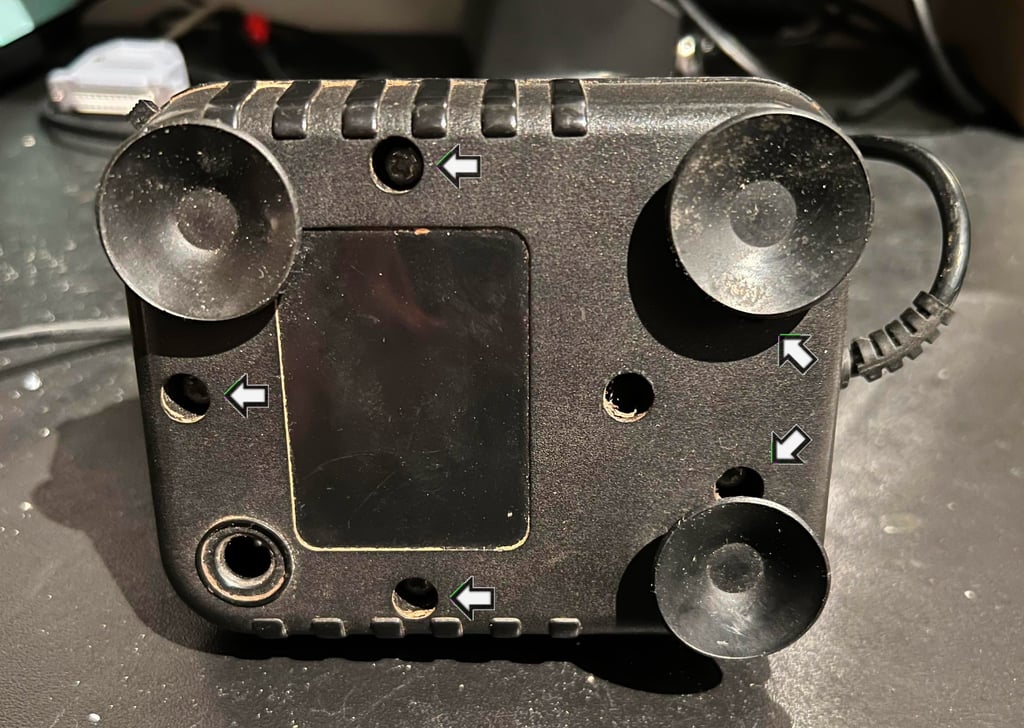

The top cover is tilted over and the interior is exposed. And holy moly... there is quite some dust and grease inside this! Also, four of the microswitches are covered with this strange dust - exactly the same as with another Zipstik which were refurbished.

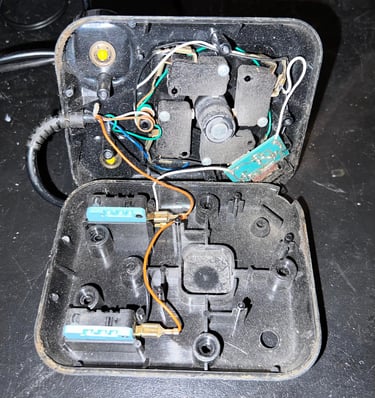
With closer inspection the reason why the autofire appeared not to work become obvious: the switch has become split in two parts. Hopefully this can be repaired.
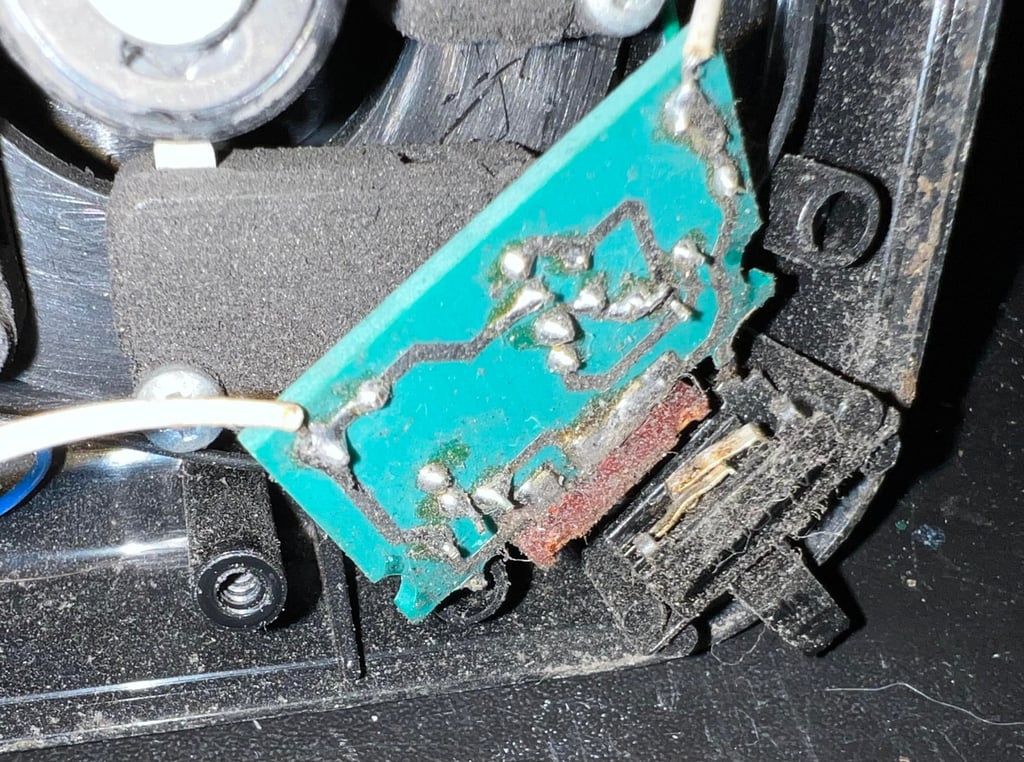

The directional microswitches are lifted out of the top cover together with the PCB.
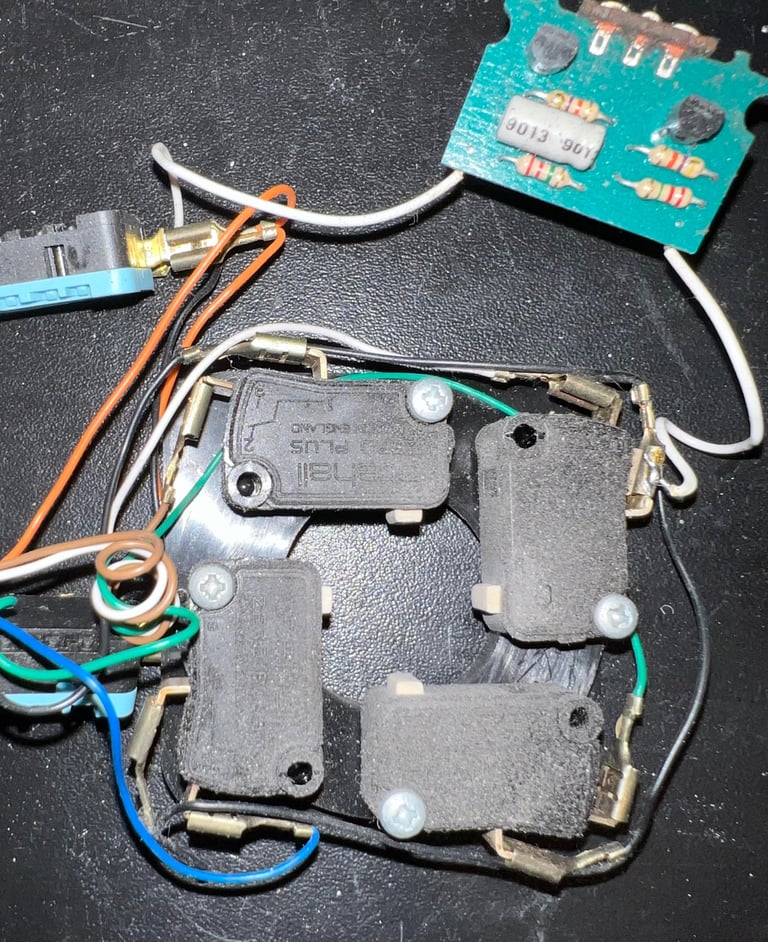

The E-clip is removed carefully from the shaft with a thin flat screwdriver. With the E-clip out of the way the two plastic parts and the metal spring is removed (see arrow marked "1", "2" and "3". Finally the two metal clips surrounding the fire buttons are removed with a pair of needle pliers.

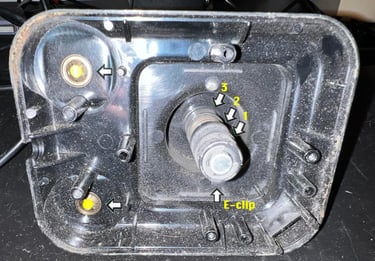
Below is a picture of the disassembled parts before cleaning and lubcrication.
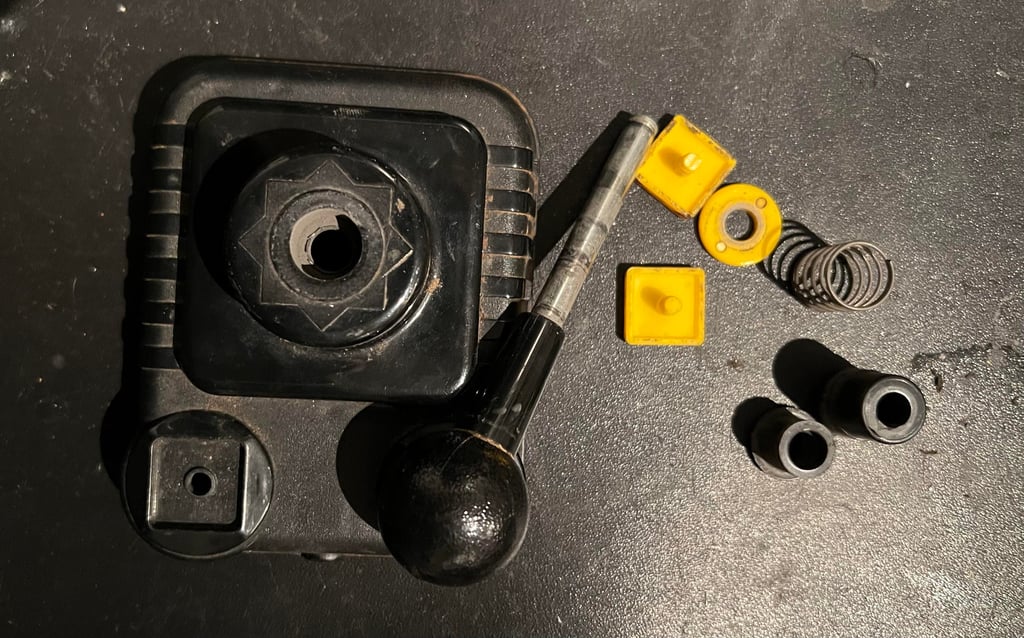


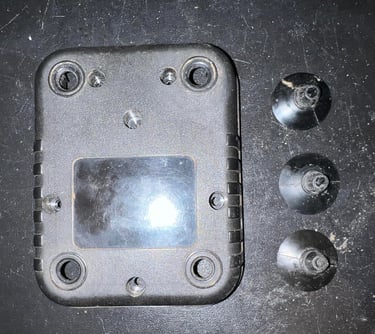
Exterior casing
All the plastic parts are placed in a box of mild soap water for about 2 x 24 hours (water changed after 24 hours).

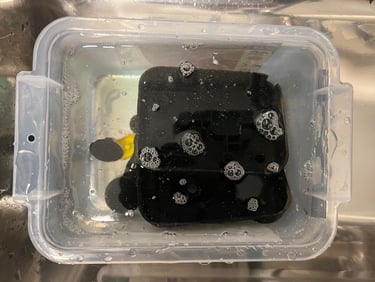
After throughly cleaning the parts look way better. There are some minor sign of use, but taken into account that these parts are 30+ years they look very good.
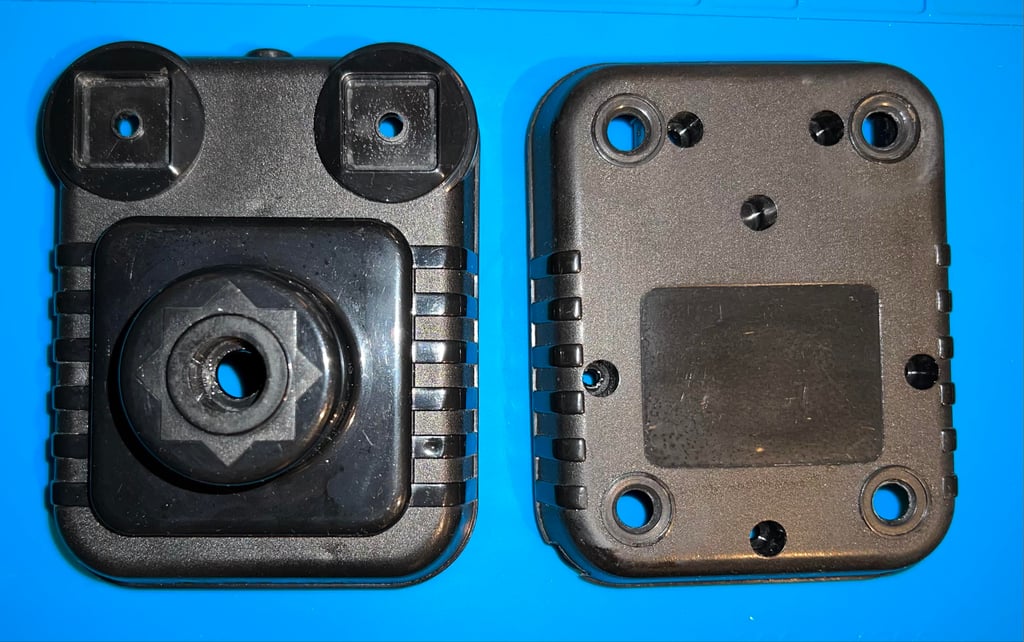


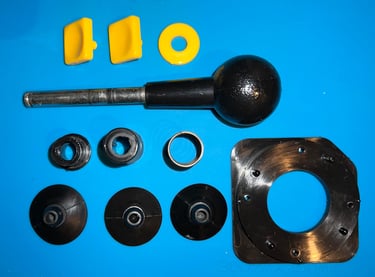
Lubrication of moving parts
As mentioned the joystick was very noisy; squeaky sounds when the shaft was moved in the different directions. To reduce (or hopefully remove) these squeaky sounds the moving parts as the shaft and fire button are lubcricated. All parts related to the joystick shaft is lubricated with general purpose grease, and the underside of the fire buttons are lubricated with sewing machine oil.
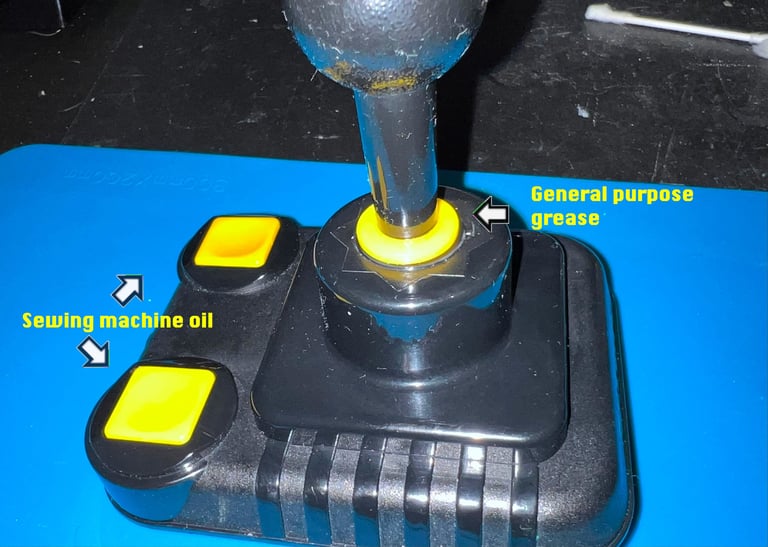

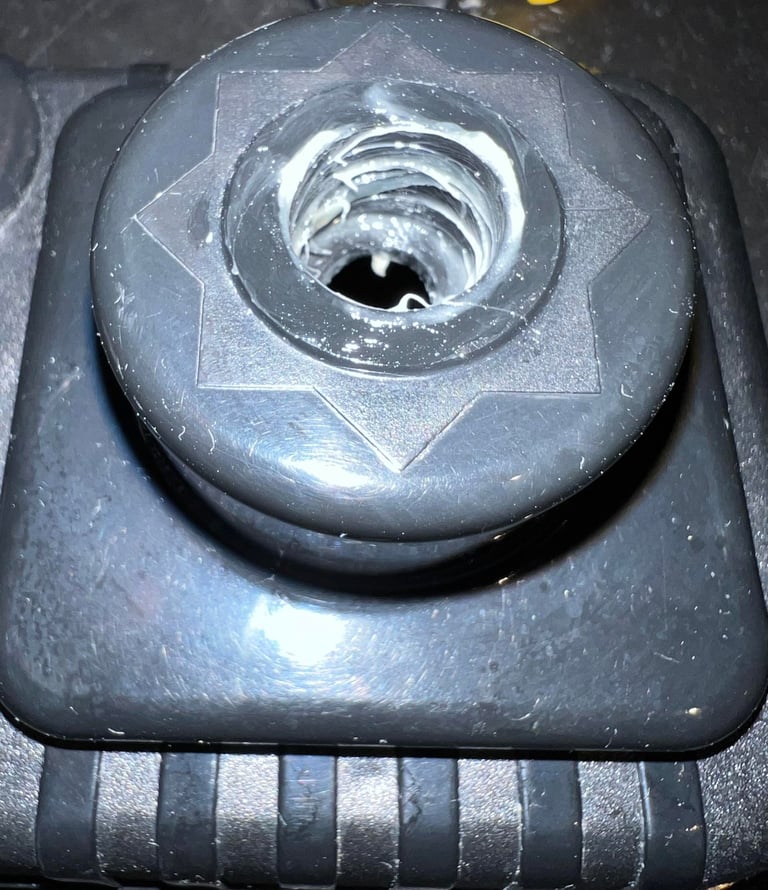

Adding a fourth suction cup
As seen initially one of the suction cups were missing. This is fixed by using a similar suction cup from a Quickshot joystick. See picture below for the result.
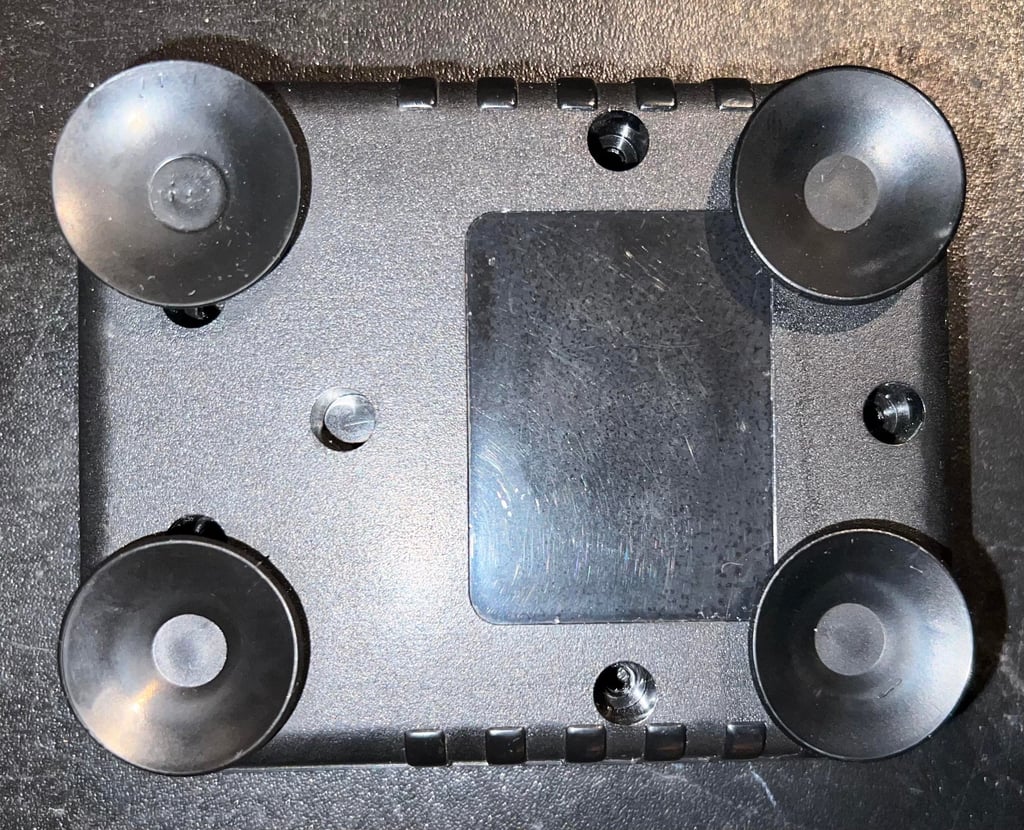

Interior
Microswitches
As previously mentioned four of the microswitches, which are mounted on a plastic ring, are covered with some odd shiny looking dust. This is very similar to what was the case in another Zipstik joystick. I have no idea what this is, but I have a hypothesis that this is caused by a chemical reaction in the microswitch plastic cover.
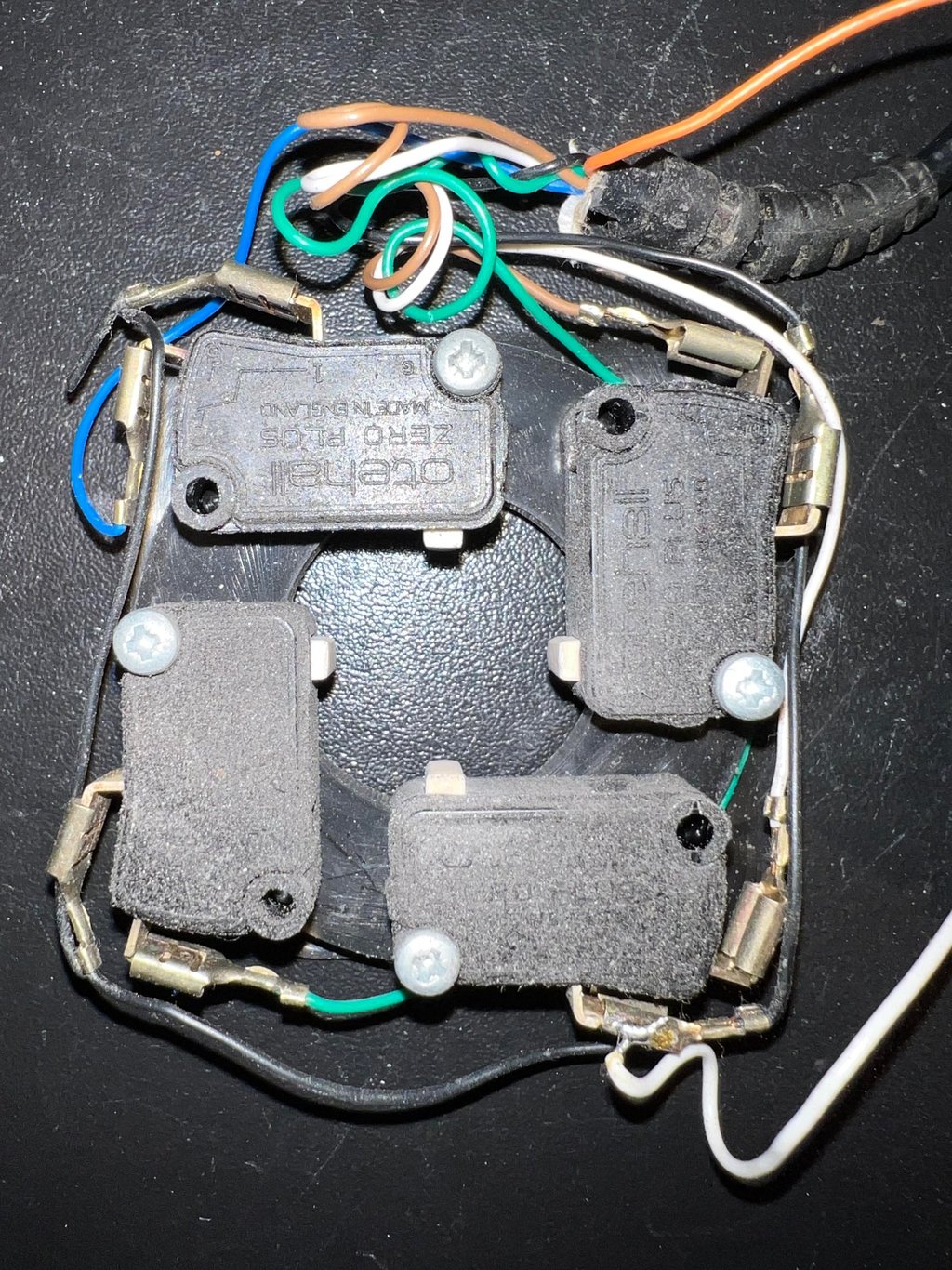

Since my hypothesis is that this dust is caused by a chemical reaction in the plastic, the dust could also be on the inside of the four microswitches. But to avoid any damage to these they are not opened, but each microswitch is placed in a jar of isopropanol for 24 hours. This should remove any inside dirt.
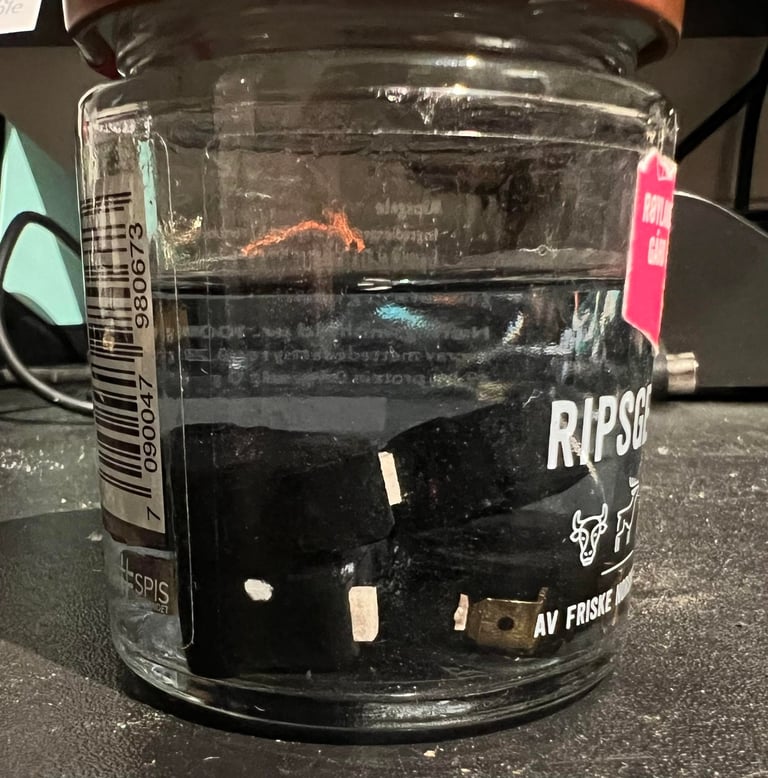

The result of the cleaning is very good. Most of the odd grease is gone, and the microswitches are as "good as new". As can be seen from the pictures below these microswitches are "ZERO PLUS" quality switches made by Otehall in England.
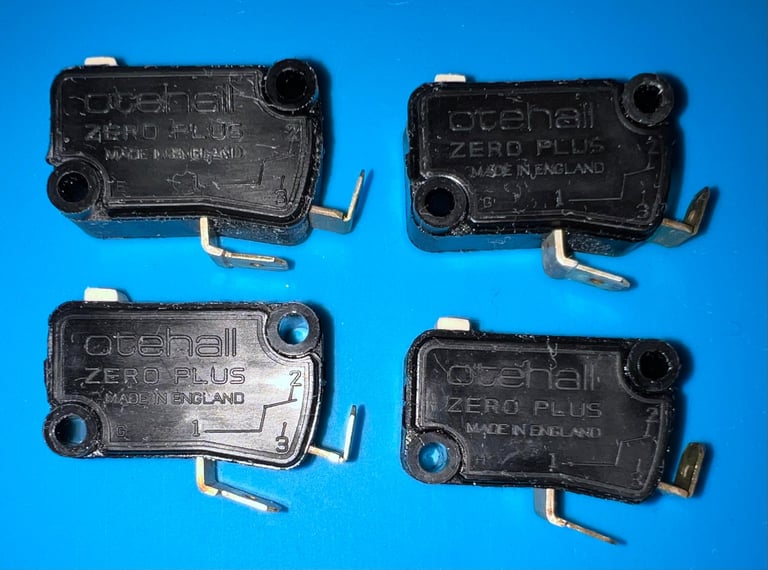

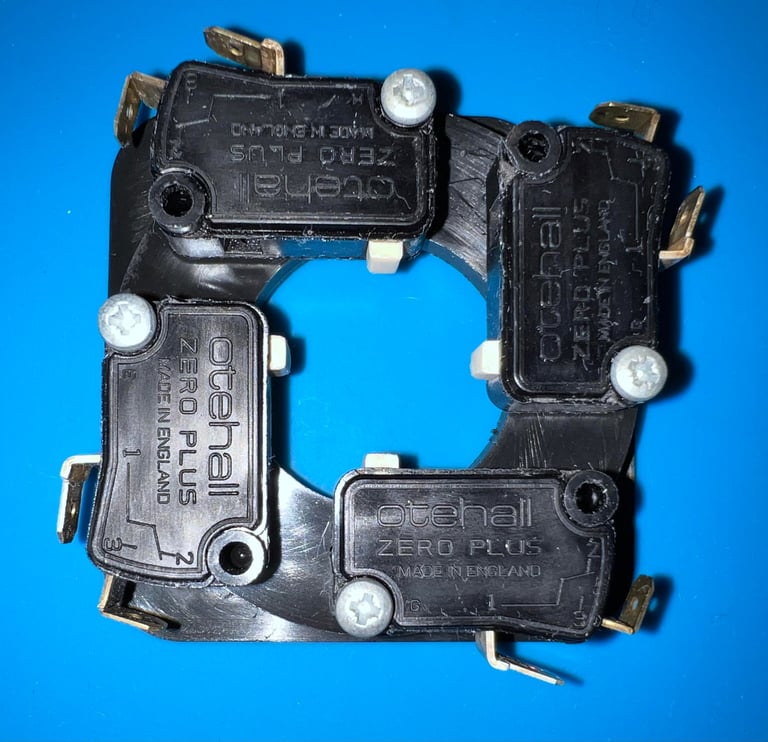

Autofire switch
The autofire switch is broken, but I think it can be repaired. Since the switch is already partly disassembled, the complete disassembly is very easy. All the individual parts are cleaned with isopropanol. See pictures below.

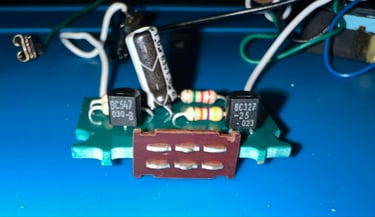
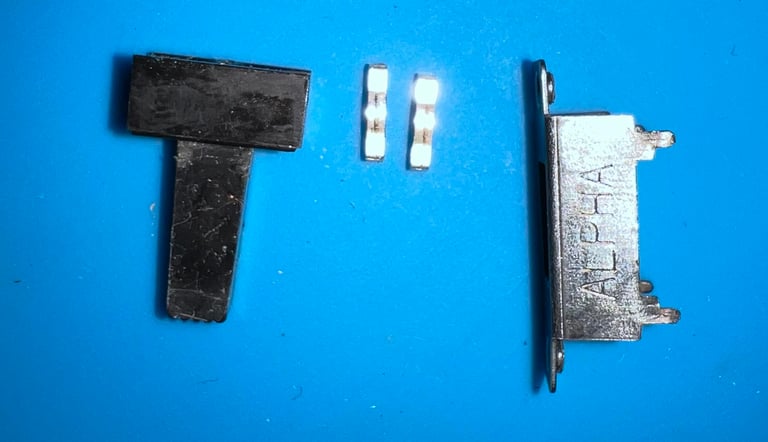

The switch is reassembled by using tools such as precision tweezers and needle nose pliers, and the result is quite good. Testing will prove if this will work or not.

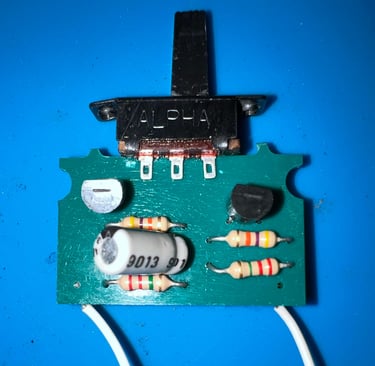
Replacing the electrolytic capacitor
Replacing the electrolytic capacitor is not strictly required. But more as a homage to the Zipstik engineers it is replaced to make sure the capacitance of 1 uF is still valid. The capacitance, in combination with the transistor and resistor circuit, will generate a pulse train used for the autofire. Below is a picture of the PCB with the new capacitor in place.
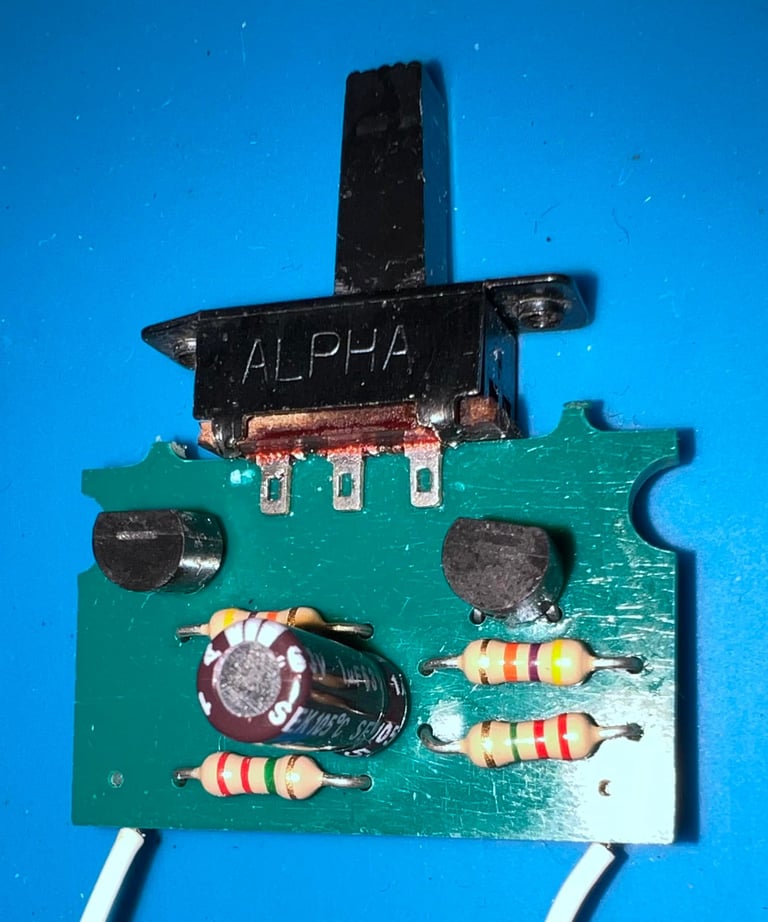

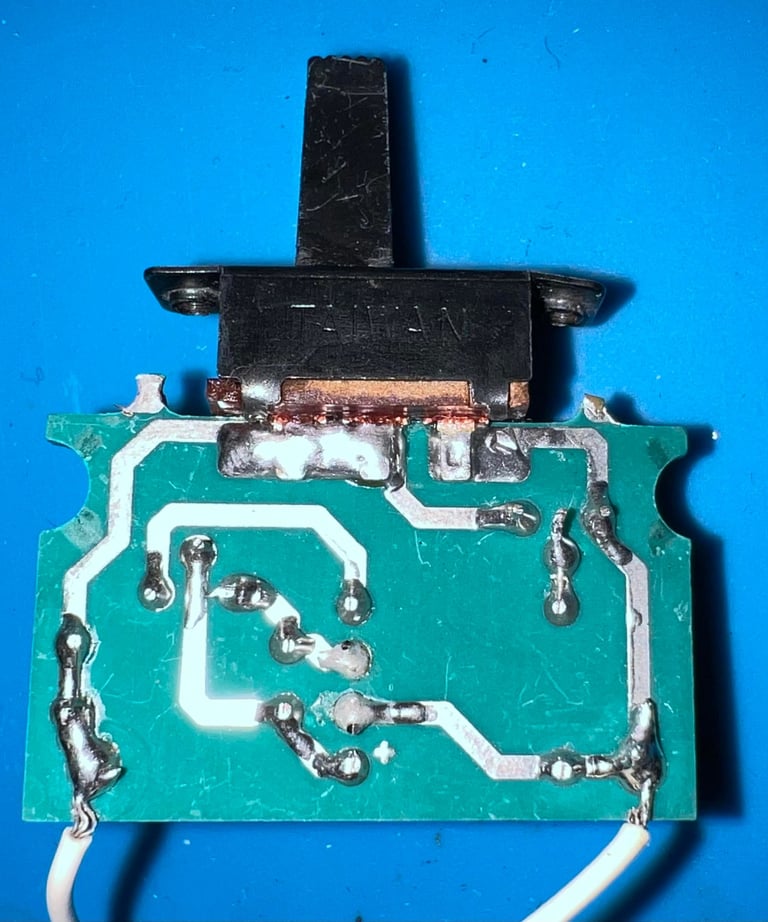

Autofire switch - revisited
It turns out that the autofire switch repair doesn´t last. When toggling the switch back and forth the back of the switch slowly starts to crumble. Instead of trying yet another repair a new old-stock switch is ordered from retroleum.co.uk. But while waiting for the switch a modern type switch is ordered from DigiKey. This switch is not identical to the original since the actuator is only 9 mm, while the original is 12 mm. The switch from DigiKey has part number 2449-MS2202L9B-ND.
Below is a picture of the new autofire switch soldered to the PCB.
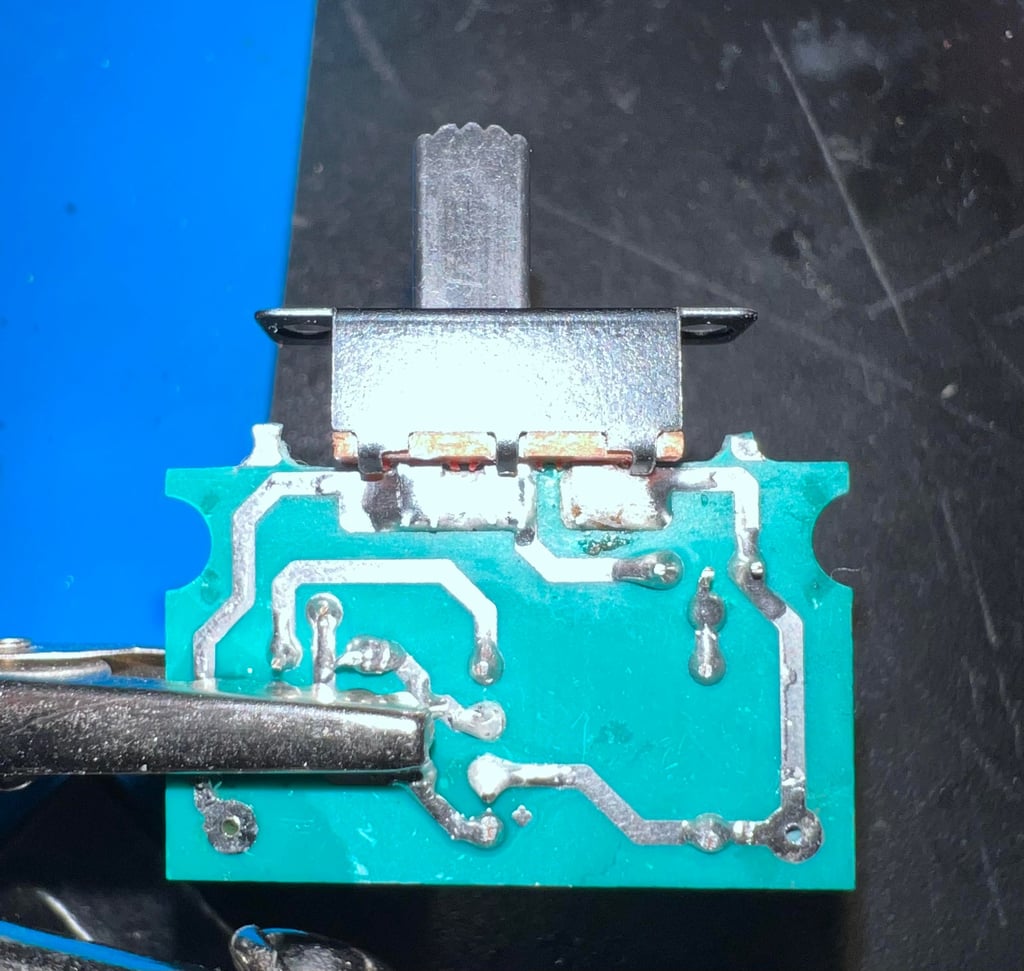

With everything cleaned and repaired the interior is re-assembled. Compared to how this looked before refurbished, this looks very nice now! Almost like new (?)
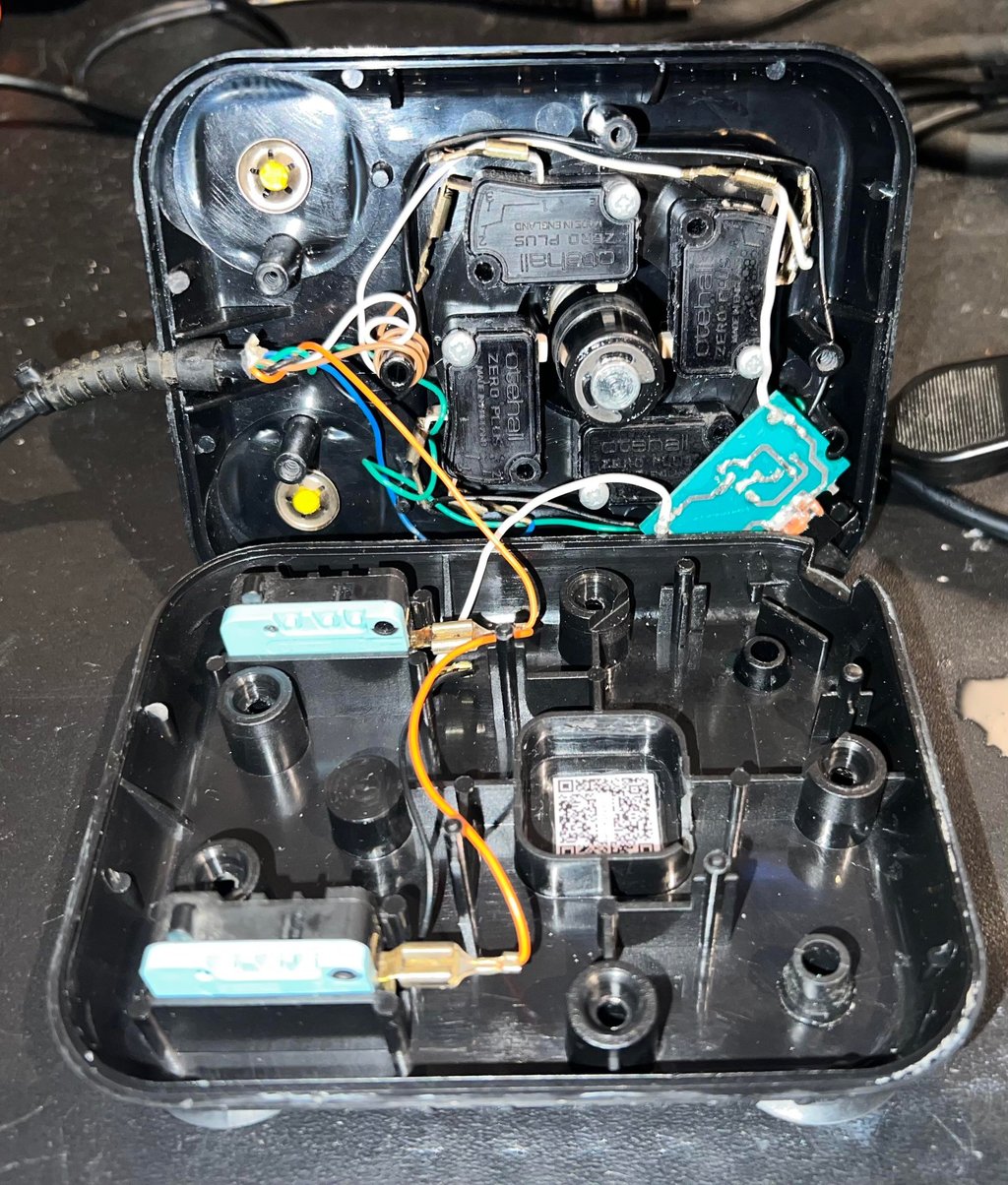

Connectivity
It is not uncommon that one or more of the joystick wires break after intensive use over several years. Checking the continuity from the connector pins to the microswitches both simple and effective. While the multimeter is in continuity mode all wires are checked - also when the wires are wiggled. Below is the schematics of the joystick connector (note: keep in mind to mirror this if you are looking at the front of the connector).
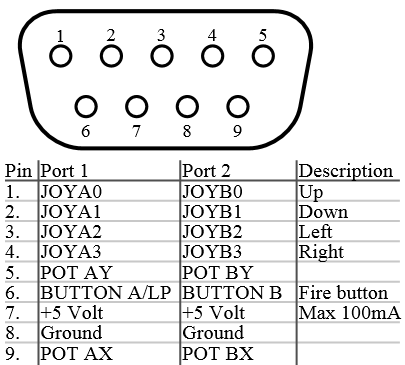

In this Zipstick joystick use six of the nine pins; UP/DOWN/RIGHT/LEFT/FIRE/Ground. Other autofire joysticks, such as this Zipstik as an example, often use the +5V DC, but this is not the case with this one.
All of the six wires seem to be working without any issues. Below is a picture from the testing.
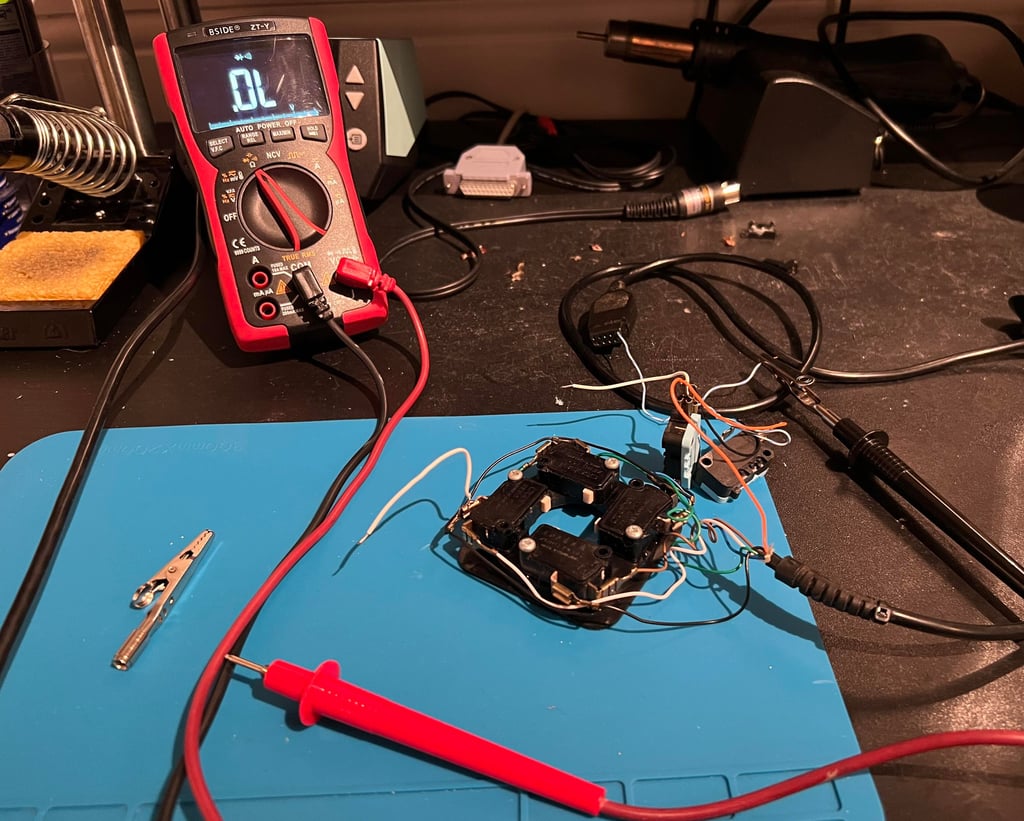

As mentioned in the first chapter the strain relief is partly broken. Luckily, the important part of the strain relief is still intact. A small black cable tie is fastened at the end of the strain relief. This should hold it in place well enough.
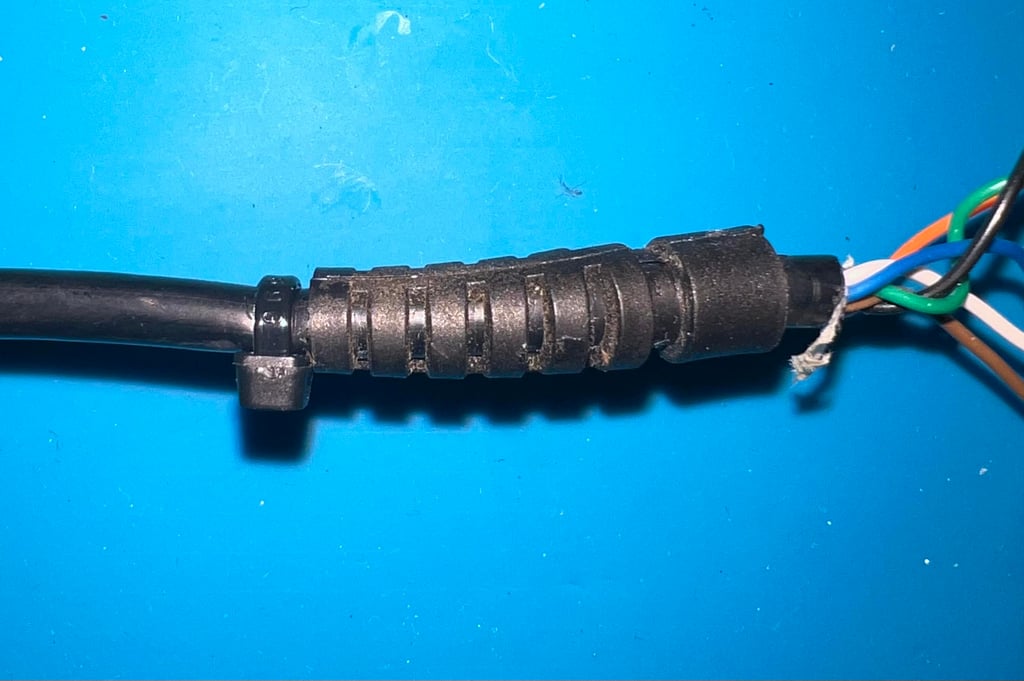

Testing
To verify that the joystick work as it should I check it with the 64 Doctor software. Result is that all directions and fire buttons works fine works as expected. All tests pass.
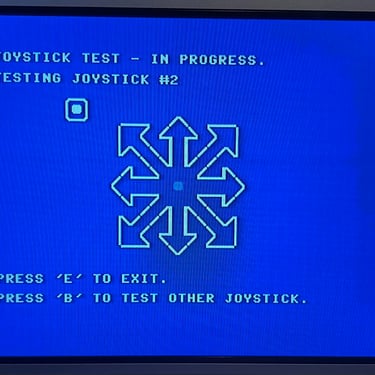
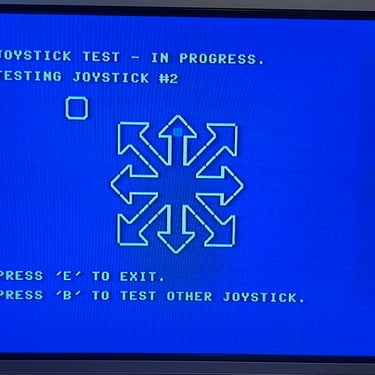


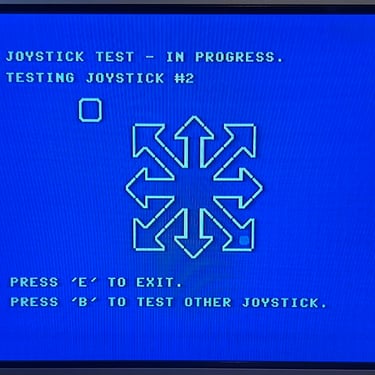
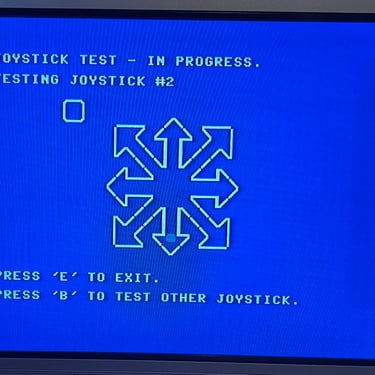

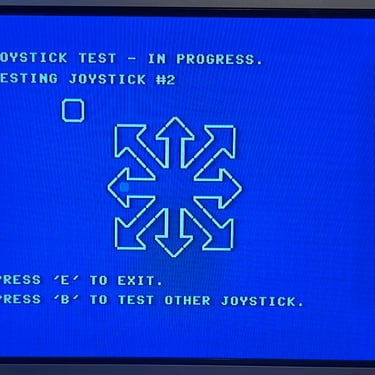
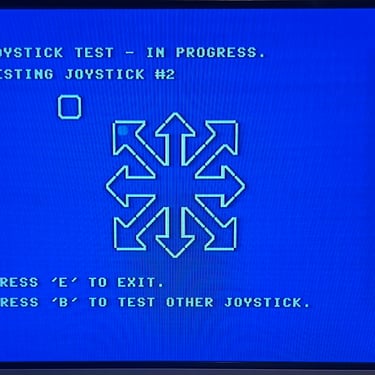
Final result
"A picture worth a thousand words"
Below is a collection of the final result from the refurbishment of this Zipstik joystick. Hope you like it! Click to enlarge!
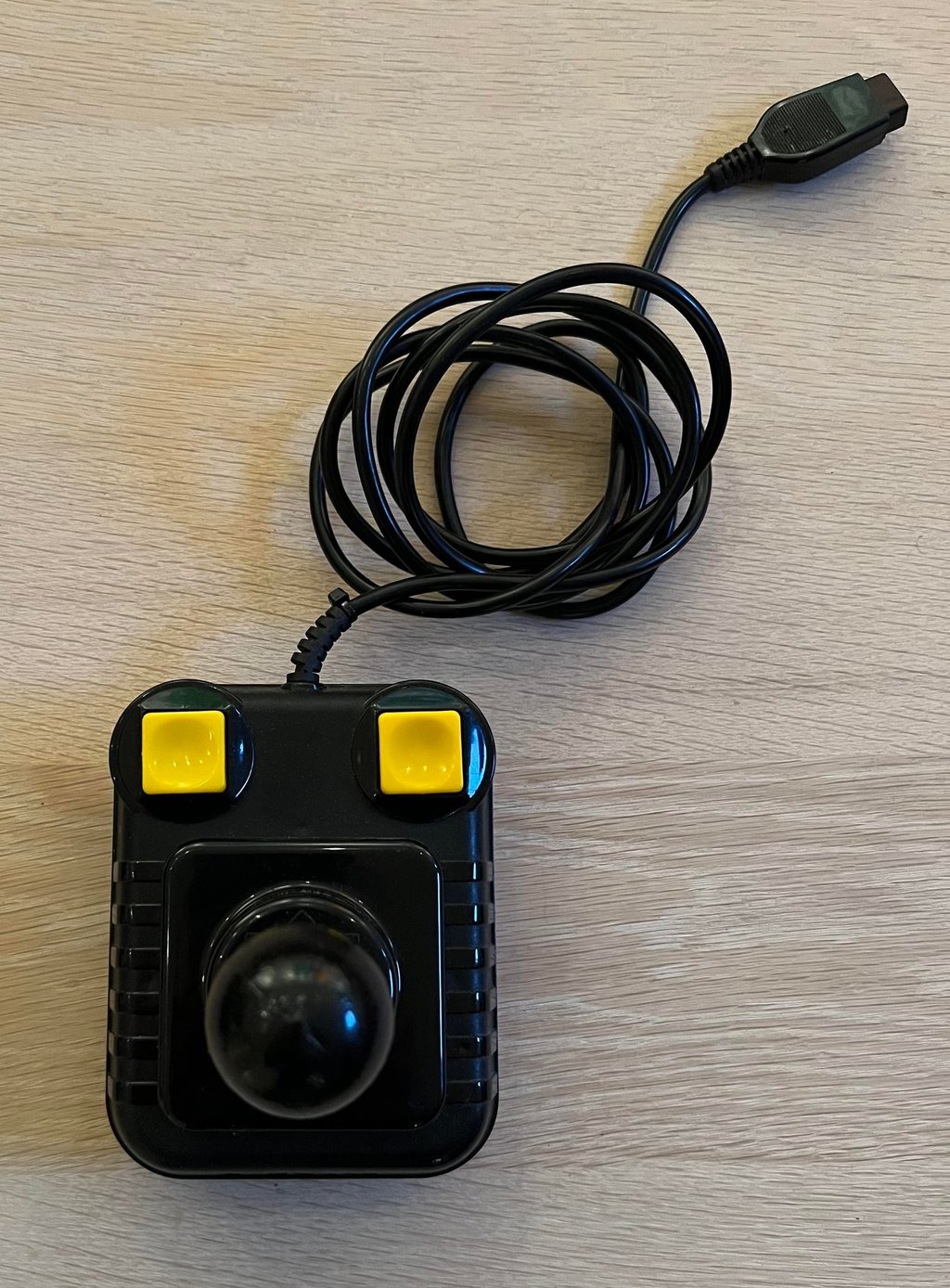

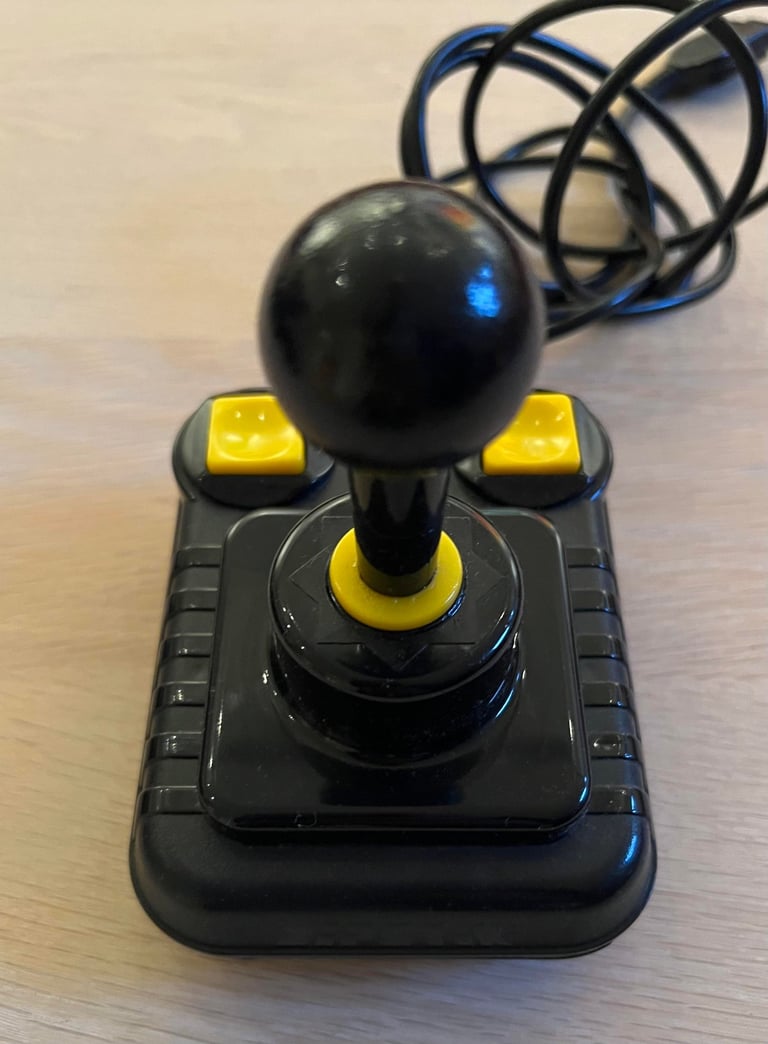


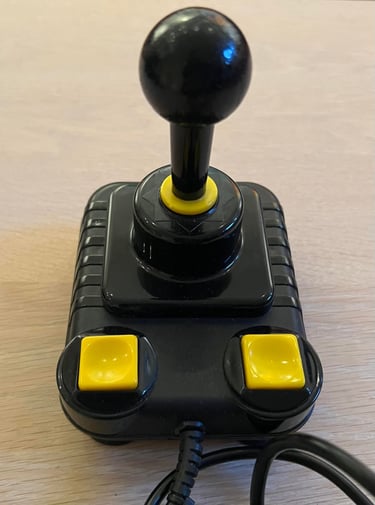
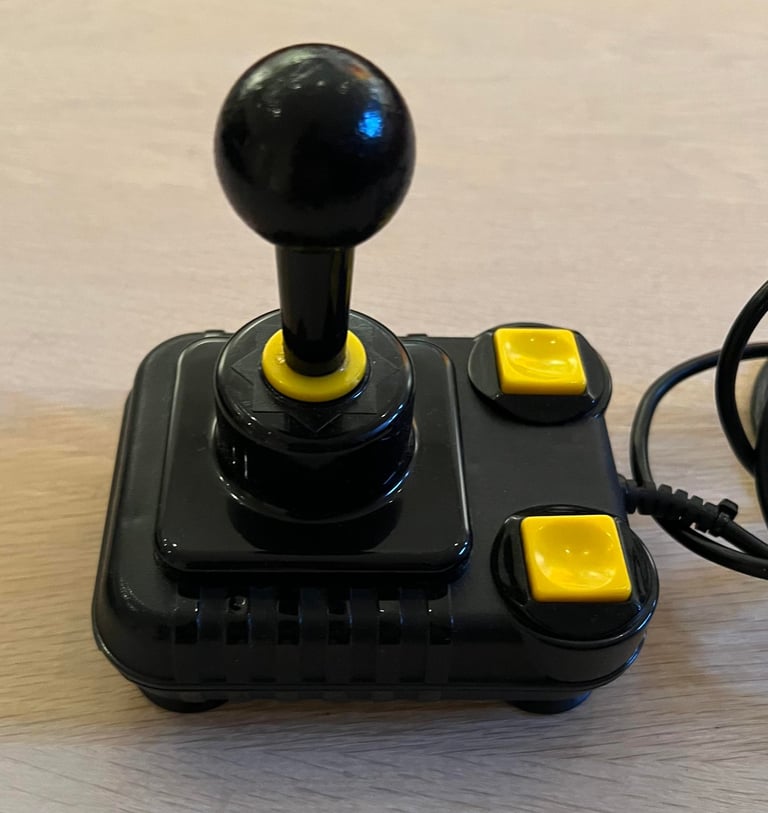


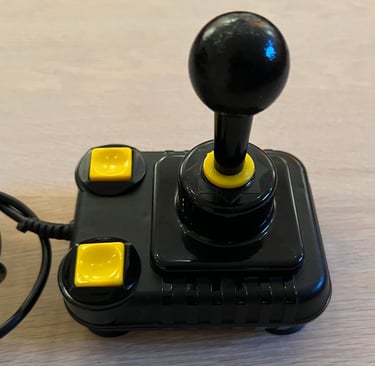
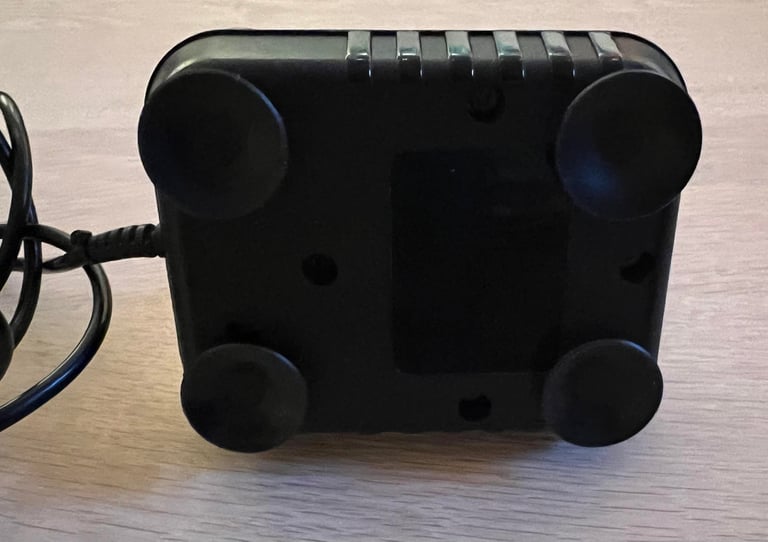

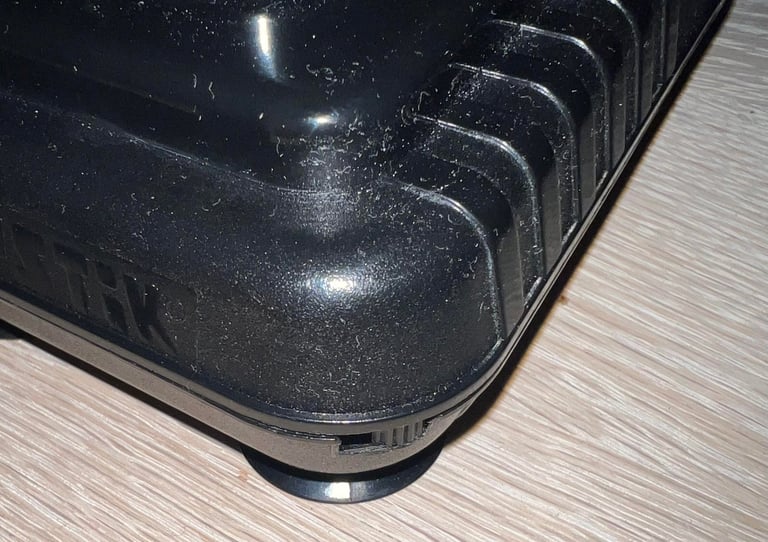

Banner picture credits: unknown
